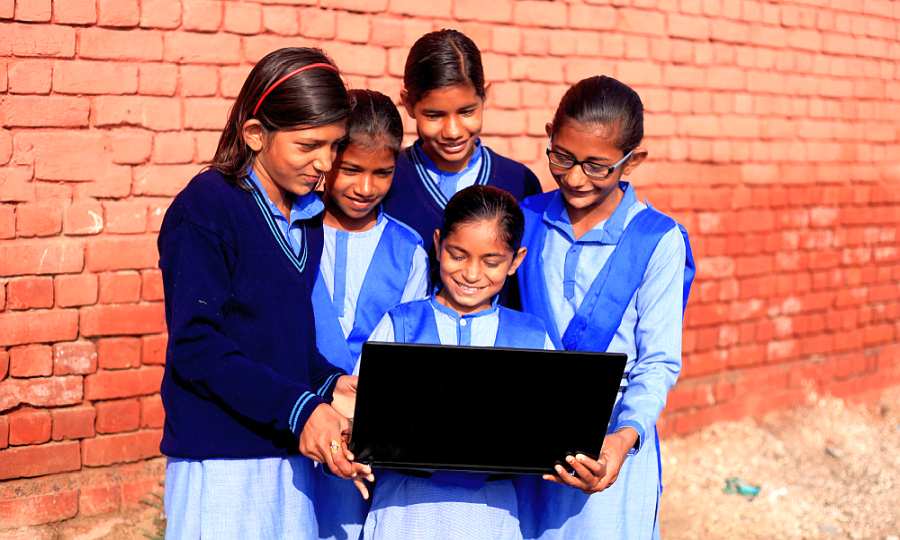UPDATED: The past week has been a very challenging time for students and teachers in India, as they get ready to start the academic year in early June. I have been keenly observing (and receiving reports) about how teachers at various schools get acquainted with their laptops, Zoom apps, and fussy internet connections — to address their wards, virtually this time, through their laptop screens. Of course, it is less of a struggle for students, who seem to be having fun and enjoying the experience. Unlike many of their teachers, they are, of course, well versed with their laptops, smartphones, and Zoom.
It began a week ago, when a few teachers decided to begin classes early, for an hour over weekends. the teachers conducted a virtual meeting with their students and explained the new “digital pedagogy.” Some insisted that students had to be dressed up in their school uniforms, with hair tied in plaits (girls), socks and shoes, etc.
A timetable was issued and Zoom meeting IDs were given for each subject. Books are yet to be distributed and I wonder how the schools will manage the logistics.
Meanwhile, some teachers are innovating to get round this challenge. Some take snapshots of text book pages and put them on a WhatsApp group for students, who need to print out the pages. I wonder how the parents are managing, especially those who do not have functional home printers.
I’ve heard from various sources that the first few sessions were hilarious with plenty of goof ups. Teachers screaming “Please go on mute!” as giggling students try to figure out where the “mute” button is on the Zoom interface. One student hit the “Pen” tool accidentally and started doodling across the screen, which was projecting the teacher’s black board. The livid teacher could be heard shouting, “Who is responsible for that? I will cancel this class!”
I also heard that the teachers had to prepare for the virtual classroom during the summer vacation. They had to buy laptops and install Zoom, Microsoft Teams, Google Classroom and other software. Orientation sessions were conducted for the teachers to get them acquainted with the usage of these apps. For the first time in years, they were experiencing a new way to teach, call it a “Digital Pedagogy” if you may.
Well, it looks like this is the new normal and our teachers and students just have to make do with the digital classroom for now. One advantage here: no lugging heavy school bags and rushing to catch the school bus. Parents are spared the back-to-school shopping chore for now.
But I bet our students are longing to get back to their schools to meet their friends and friendly teachers.
I remain optimistic that things will be back to normal by the end of the year, so that our students are not denied the pleasures of school days — interacting with friends, sports, drama, elocution contests, the canteen, music classes, media sessions, Karate and Taekwondo classes, swimming, table tennis, badminton, chess, computer classes, and of course, interactive sessions in the classroom with their beloved teachers. For these activities cannot be virtualized. It just won’t be the same. It’s not possible to develop motor skills sitting behind a screen — these are physical activities. And all-round development requires both, development of motor and mental skills. So in my opinion, virtual learning is not a sustainable model for learning.
Meanwhile, I am sure our highly dedicated and experienced teachers will master all the digital tools and find new ways to make learning interactive and fun!
You might also want to read a similar article I found on The New York Times here: https://www.nytimes.com/2020/06/06/opinion/coronavirus-schools-reopen.html









